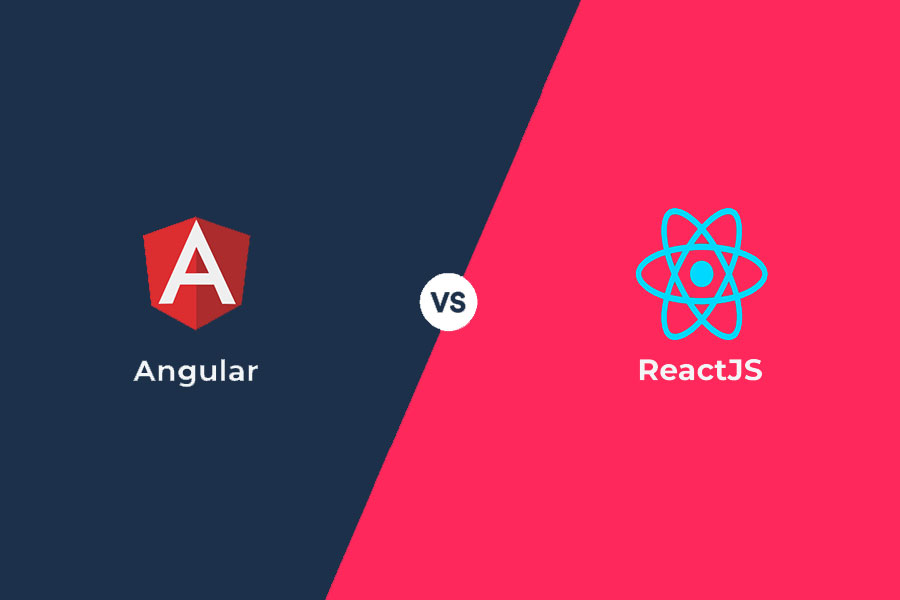Angular vs React: Which Framework is Best for Your Next Web Development Project
Choosing the right tool can make or break the success of your web development project. Among the numerous options available, Angular and React are two of the most widely used frameworks for building scalable, interactive applications. But how do you determine which one aligns with your project’s needs?
Whether you’re a beginner or an experienced developer, understanding the core differences, features, and best practices of Angular and React is essential for making an informed decision. Let’s dive into a detailed comparison of these two powerhouse tools to help you choose the right one for your next project—a staff augmentation initiative or a full-scale enterprise solution.
Angular and React: What Are They?
Angular: A Full-Fledged Framework
Backed by Google, Angular is a comprehensive framework for building robust, scalable applications. It’s an all-in-one toolkit that comes with built-in solutions for routing, state management, and more, making it ideal for complex, enterprise-grade projects.
Key Features of Angular
- Two-Way Data Binding: Ensures real-time synchronization between the model and view.
- Dependency Injection: Enhances code modularity and maintainability.
- TypeScript-Based Development: Ensures type safety and better tooling.
- Built-In Routing and State Management: Streamlines application logic.
React: A Flexible UI Library
Developed by Facebook, React is a library for building dynamic user interfaces. Unlike Angular, It focuses on rendering views and relies on third-party tools for additional functionality, offering unparalleled flexibility for custom solutions.
Key Features of React
- Component-Based Architecture: Encourages reusability and scalability.
- Virtual DOM: Ensures high performance with fast rendering.
- JavaScript-Centric with TypeScript Support: Offers flexibility in development.
- Third-Party Tool Integration: Provides freedom to choose external libraries for routing, state management, and more.
Core Differences: Angular vs React
Learning Curve
- Angular: Due to its all-encompassing nature, Angular has a steeper learning curve. Mastering Angular means understanding concepts like dependency injection, RxJS, and TypeScript.
- React: It is more manageable for beginners, especially those familiar with JavaScript. It offers a more hands-on approach to integrating external tools.
Performance
- Angular: Slightly heavier due to its extensive features but offers excellent performance in large-scale applications with proper optimization.
- React: Lightweight and fast, thanks to its virtual DOM and focus on rendering components efficiently.
Development Approach
- Angular: Opinionated framework providing a structured development path.
- React: Flexible and unopinionated, allowing developers to choose tools and workflows.
Pros and Cons of Angular
Pros
- Complete solution with no need for additional libraries.
- Strong community and Google’s backing.
- Excellent for enterprise-grade applications.
Cons
- Steeper learning curve.
- It can feel heavy for smaller projects.
- Complexity in debugging and optimizing performance.
Pros and Cons of React
Pros
- Lightweight and fast.
- A rich ecosystem with a wide array of third-party libraries.
- Extensive community and Facebook’s support.
Cons
- Requires additional libraries for routing, state management, etc.
- Less structured, which might lead to inconsistencies in large teams.
Key Use Cases
Angular
- Enterprise applications with complex architecture.
- Applications with dynamic content that require frequent updates.
- Projects requiring a structured, all-in-one solution.
React
- Single-page applications (SPAs) with a focus on user experience.
- Projects where flexibility and custom solutions are a priority.
- Mobile-first applications using React Native.
Best Practices for Angular and React
Angular Best Practices
- Use TypeScript effectively for type safety.
- Leverage Angular CLI for faster development.
- Optimize performance by using on-push change detection.
React Best Practices
- Break components into smaller, reusable pieces.
- Use state management libraries like Redux or Context API wisely.
- Regularly update dependencies to benefit from the latest features.
Framework vs UI Library: Which Is Better?
The choice between Angular and React often boils down to the project’s needs:
- Framework (Angular): Best for structured, large-scale applications.
- UI Library (React): Ideal for flexibility and custom-built solutions.
Key Features to Consider
| Feature | Angular | React |
| Language | TypeScript | JavaScript/TypeScript |
| Performance | Optimized for large apps | Lightweight and fast |
| Flexibility | Opinionated | Unopinionated |
| Community Support | Large | Massive |
Why Angular and React Dominate Web Development
Both Angular and React dominate the web development landscape because they can streamline the creation of scalable, dynamic applications. They cater to many projects, from small startups to large enterprises, ensuring developers have the tools to succeed.
Conclusion: Angular or React – Which Tool is Right for You?
Angular and React are both powerful tools, but your choice should align with your specific needs:
- Choose Angular for structured, large-scale, enterprise-grade applications.
- Opt for React if you value flexibility, modularity, and a lightweight approach to development.
By understanding their differences, strengths, and use cases, you can confidently select the framework or library that best suits your next web development project.
Ready to explore the future of web development? Experiment with Angular and React on small projects to discover which fits your workflow and goals. Whether leveraging dedicated development teams or enhancing your in-house capabilities, both tools can deliver exceptional results in modern web applications.








